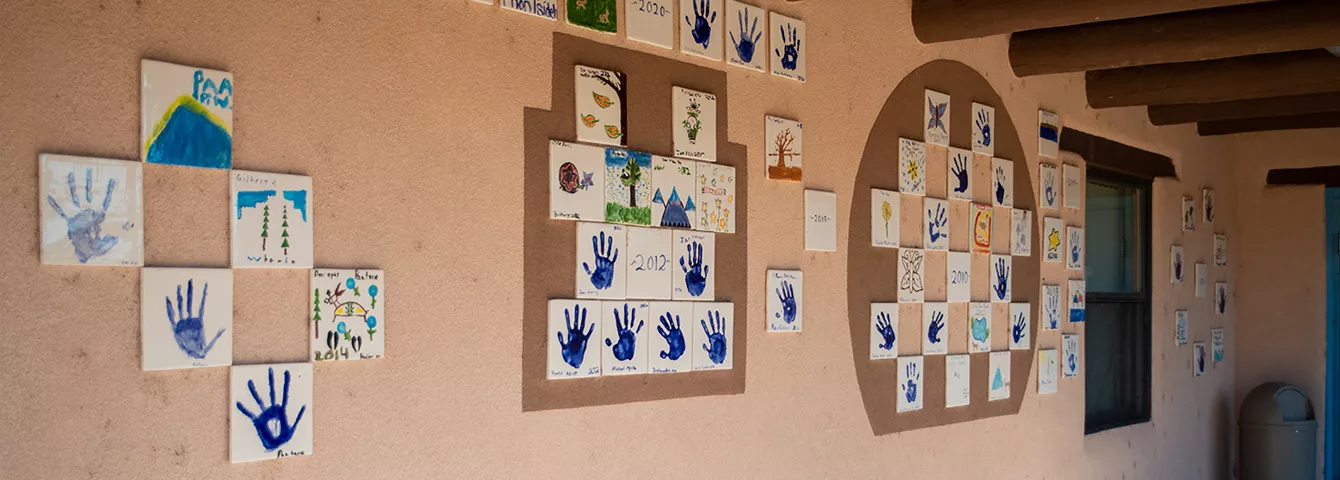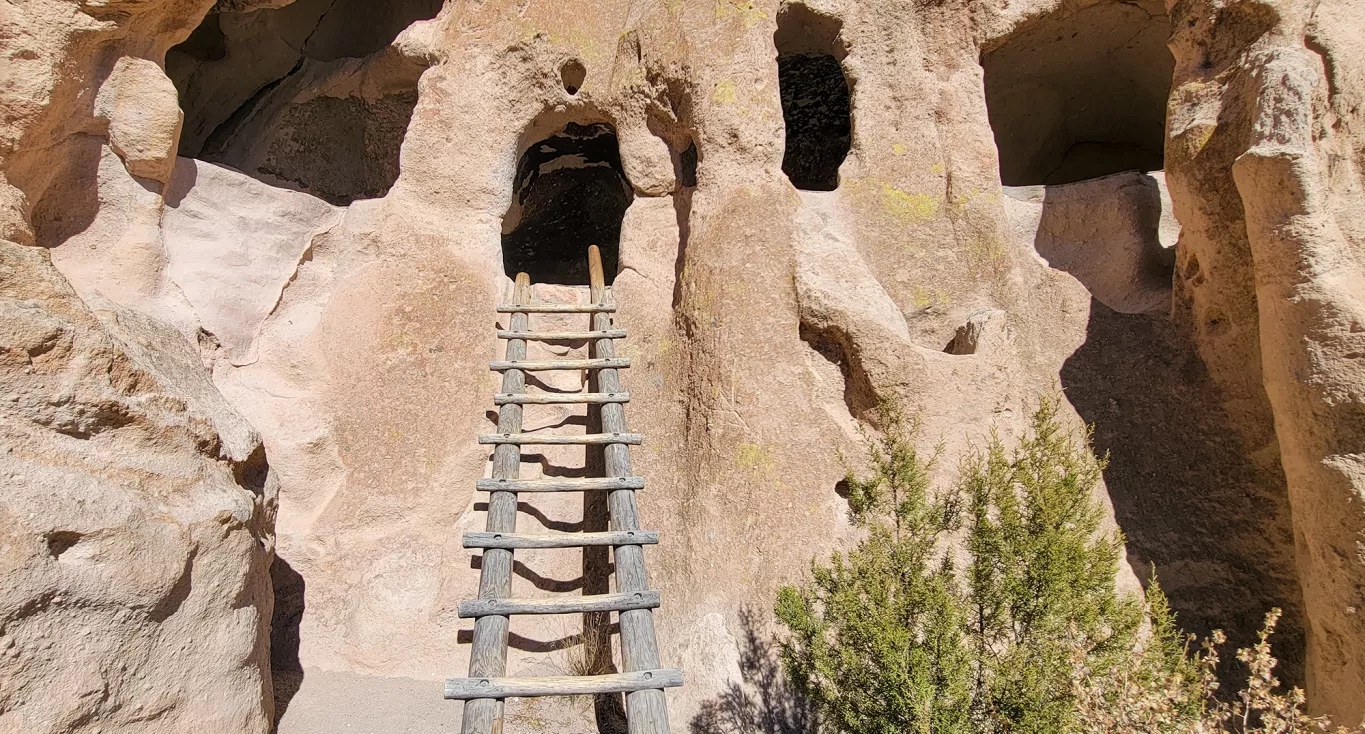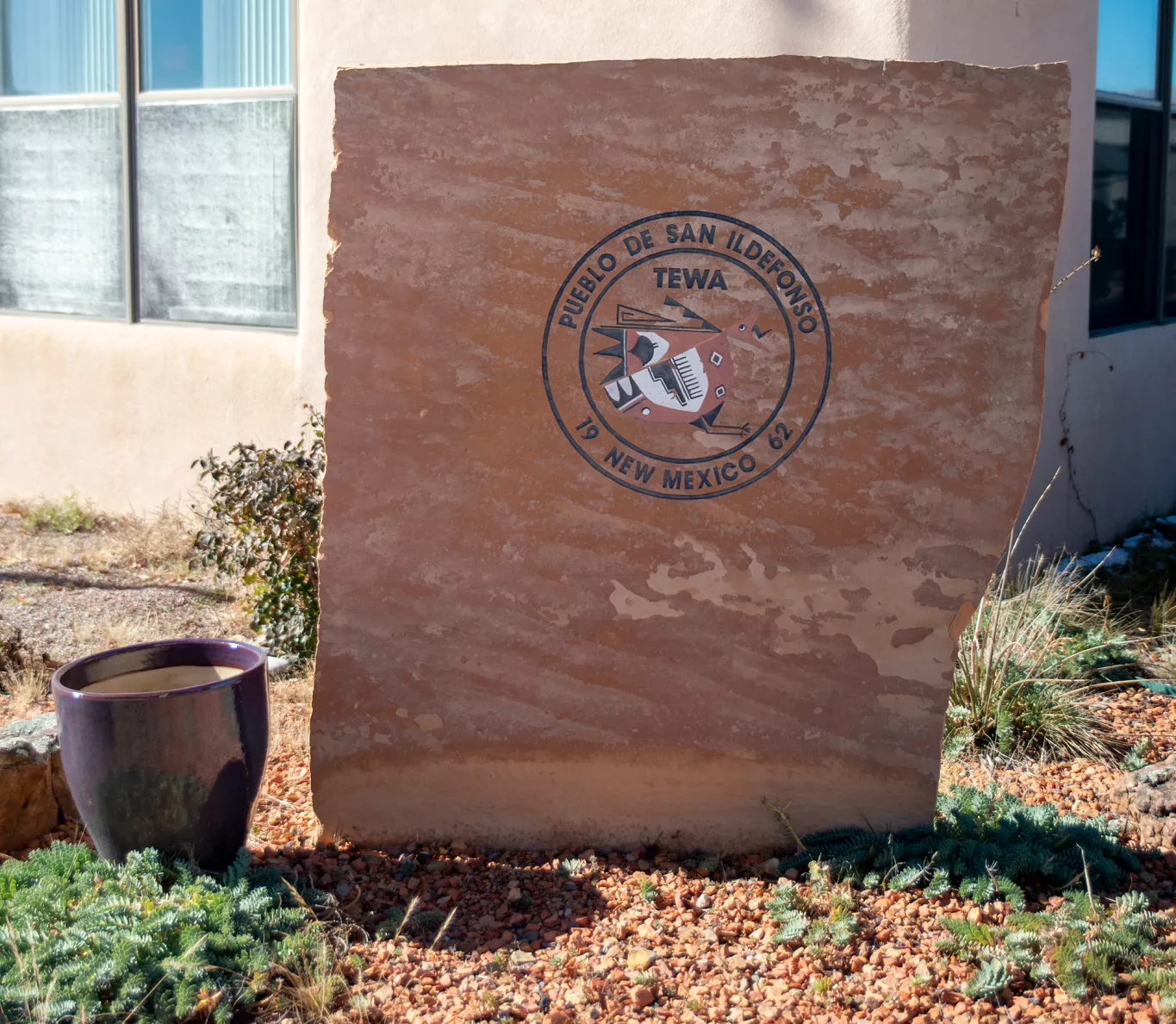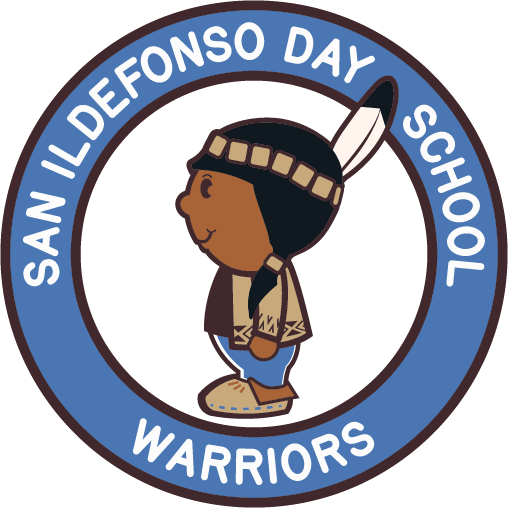Our History

San Ildefonso Day School in Santa Fe, NM was established for the advancement and preservation of Pueblo tradition and culture through early elementary and grade school education. Three major legislative actions sparked a series of important initiatives regarding Pueblo and Tewa education, which helped facilitate the birth of San Ildefonso Day School:
- The Indian Reorganization Act of 1934, which introduced Indian history and culture.
- The Indian Self-Determination and Education Assistance Act of 1975, which allowed federally recognized tribes to determine education programs suitable for their children.
- The Education Amendment Act of 1978, which empowered Indian School Boards and permitted the hiring of local teachers and staff.
As a trailblazing partner of the Bureau of Indian Education (BIE), San Ildefonso Day School meets the specific learning needs of Tewa students from grades K - 6. This community of academic, cultural, and social learning was created to guide students through primary, secondary, higher education, and adulthood.
With San Ildefonso Day School’s partnership with the BIE, the goal has always been to provide quality education in accordance with the Pueblo community’s needs for social, cultural, and economic well-being. Advanced teaching tools, digital competencies, and evidence-based learning strategies are key to San Ildefonso Day School’s successful holistic curriculum.

Originally, our people were settled in lands just north of our current Tewa tribe’s San Ildefonso location. The Elders say that we journeyed from the Mesa Verde complex, which is just north of New Mexico in southern Colorado. We hailed from this historic heritage site, where Ancestral Pueblo people thrived in the cliffs and mesas for over 700 years.
In our first move, we migrated to Bandelier, which is south of Los Alamos, NM. Our people were able to thrive there due to the rainfalls and our ability to build sustainable living structures. However, around 1300 A.D., after a prolonged drought, we were forced to migrate further south into the valleys of the Rio Grande. Once again, our people found a way to thrive.
It was during the early 1600s that Spanish conquistadors threatened to subdue our people and force their religion on us. This conflict ultimately led to the Great Pueblo Revolt of 1680. Po’pay of Ohkay Owingeh (formerly referred to as San Juan Pueblo) organized and led the revolt. Our people were brave; they withstood the Spaniards and climbed to the top of the Black Mesa, a volcanic basalt just north of our current pueblo. Ultimately, the siege ended with a compromise that preserved our freedom of religion and our rights to self-govern.
San Ildefonso Pueblo is the name given to our tribe by the Spaniards. In Spanish, Pueblo means town, but we refer to our specific location by Tribe. Our Tewa location name is “Po-woh-ge-oweenge”, which means “Where the Water Cuts Through.” The Spaniards named our Tribes/Pueblos after patron saints. San Ildefonso was named after Saint Ildefonsus who was an archbishop of Toledo Spain.




